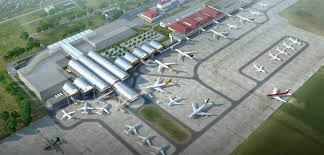
Mactan-Cebu International Airport
MactanCebuAirport.com
CENTRAL Visayas is projected to grow between 7.5 and 8 percent on average in the next six years on the back of robust industry and services sectors, the region’s economic chief said.
Efren Carreon, director of the National Economic and Development Authority in Central Visayas (Neda-7), said this growth target is included in the Regional Development Plan 2017–2022, which was approved by the Regional Development Council (RDC-7) in April of this year.
“We are happy that from 2011 to 2016, our GRDP (gross regional domestic product) growth rate on the annual average was 7.5 percent, the highest among all regions. This was very encouraging. That is why in our plan for 2017 to 2022, we are targeting that our growth will be between 7.5 and 8 percent on the average,” he told reporters on the sidelines of the RDC-7 advisory committee meeting last week.
Central Visayas grew by an impressive 8.8 percent in 2016, ending the year with a P525-billion GRDP and sustaining its position as among the fastest-growing regions in the country.
Carreon said the industry and services sectors were also the major drivers of growth in the region, with industry fueled by construction and manufacturing.
In 2016, the services sector had the biggest contribution to the growth with 55.5 percent share. The industry sector contributed 39.1 percent; and agriculture, forestry and fisheries contributed 5.9 percent.
In terms of growth, industry registered highest growth, specifically the construction subsector, which grew by 40.4 percent.
Services sector grew by 5.9 percent while the agriculture, forestry and fisheries sector contracted by 0.6 percent.
Carreon said the industry and services will remain as the region’s top economic drivers in the next six years, especially since Central Visayas’ tourism industry is expected to get a boost from big-ticket infrastructure projects.
MCIA terminal
Among these projects are the second passenger terminal of the Mactan-Cebu International Airport (MCIA), which targets to increase the gateway’s capacity to 12 million by June 2018 from the current 4.5 million, and the new international airport on Panglao, Bohol.
Central Visayas has welcomed 5.95 million tourists from January to December last year and tentatively targets to attract 7 million visitors by the end of 2017, even as tourism stakeholders continue to recover from the effects of terrorist activities earlier this year.
The future of the business process outsourcing (BPO) sector, which is also among the major economic drivers of the region, is also uncertain as some US companies have reportedly put on hold their plans for expansion due to “unclear” policies by the Trump administration.
Economic drivers
Carreon, for his part, said that the beauty of Central Visayas is that it hosts a diverse set of economic drivers.
“In case there is a weak sector, other sectors will compensate for it. Similar to what happened in agriculture and fisheries, which were negative and had very low contribution. This was offset by other sectors such as construction, retail, BPO and tourism,” he pointed out.
He added that unlike other regions which basically depend on only one or two major sectors, with the entire regional economy paralyzed once these collapse or decline, Central Visayas can draw strength from a balanced mix of industries.
While prospects remain bright for the region’s growth, Carreon also cited possible scenarios beyond their control that may prevent Central Visayas from hitting its targets.